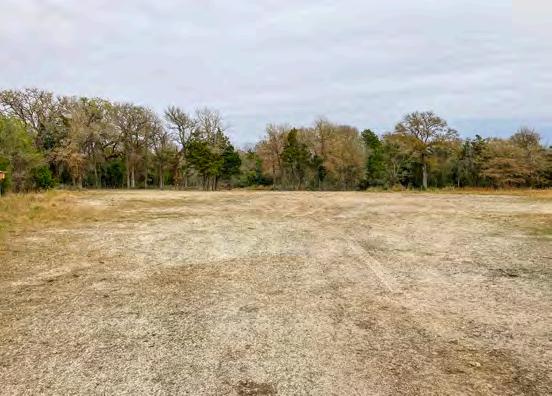
2 minute read
RRC Puts in Extra Work to Remediate Historic Coal Mine, Protect Endangered Toad
Dealing with an abandoned coal mine is more than just simply filling a hole.
In fact, a lot of work needs to be done before even starting construction to reclaim such mines, such as environmental and geotechnical surveys, applying for permits and funding and developing a plan. In the case of RRC’s Bailey-Stevenson Project, located between Bastrop and Camp Swift, the land is in the middle of known habitat for the Houston toad, an endangered species. “The site had to have extensive Houston toad mitigation,” said Katie Upham, Abandoned Land Mine Program Manager. “We put up an exclusion fence, and we had a biological monitor, a biologist who is permitted to pick up endangered species.” Before construction could begin to dig out and fill in nearly two dozen sink holes, the exclusion fence – which, as the name suggests, was designed to keep toads out – was set up where the construction would take place, Upham said. Once up, the interior of the fence had to be extensively surveyed for any toads present and remove them, if needed. And construction could only occur during a narrow window to minimize any harm to the toads.
The sink holes were the result of underground tunnels from what is believed to have been part of the Miley Spur Mine, which operated from 1919 to 1929, and was operated by the Belto Mining Co., according to survey work conducted by the Colorado River Authority and published as the “Mining History of the Powell Bend Lease Area” in 1982.
The tunnels used to extract coal averaged about 30-35 feet under the surface and eroded over time, eventually collapsing and creating sink holes, said Joe Parks, Assistant Director of RRC’s Surface Mining and Reclamation Division.
Because the sink holes were not near any buildings or other structures, the AML program was able to use sandy-clay subsoil material to fill the excavated holes rather than cement, which provides more structural support. The actual construction work and other site remediation efforts, including revegetating the areas with grasses known to benefit the toads and other species, cost less than the development work beforehand: $127,000 versus $175,000.


Because the work had to be done within a narrow window between toad breeding season and migratory bird movement, AML staff relied upon the timely help of other RRC staff, Parks said, including Patrick Shelton from General Counsel, Matt Bowman from Procurement and Theresa Lopez, the Procurement Director. “Otherwise, we might have had to wait another year to get this project started,” Parks said. The work removed any potential threats to public safety and the environment, providing both prime habitat for the toad and useable property for the landowners. Adjacent landowners, who are also being impacted by the same historic mine, came forward during construction and will likely be part of a future AML project, Parks said. If you are a landowner and think you may have an historic mine tunnel under your property, you can contact the AML program at 512-305-8830 or mining@rrc.texas.gov.






